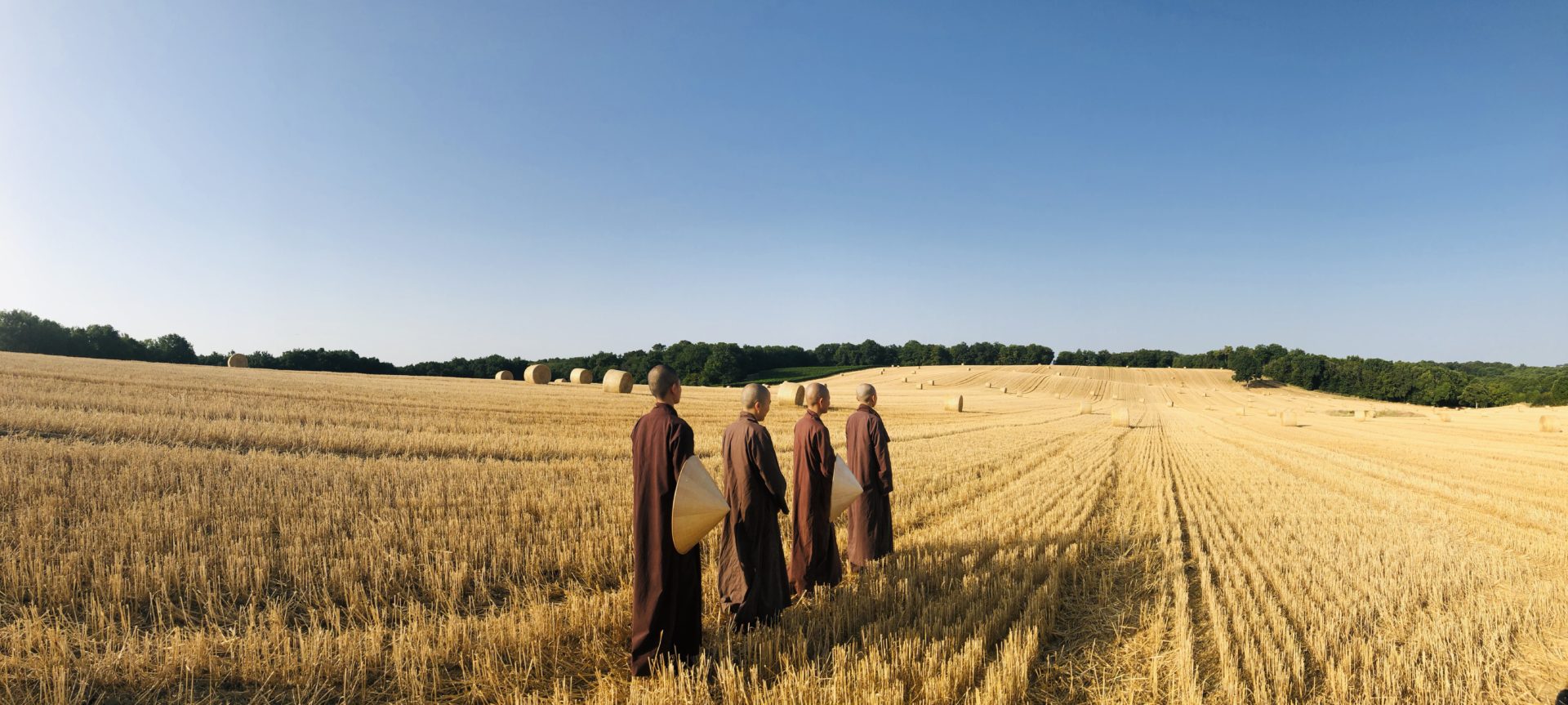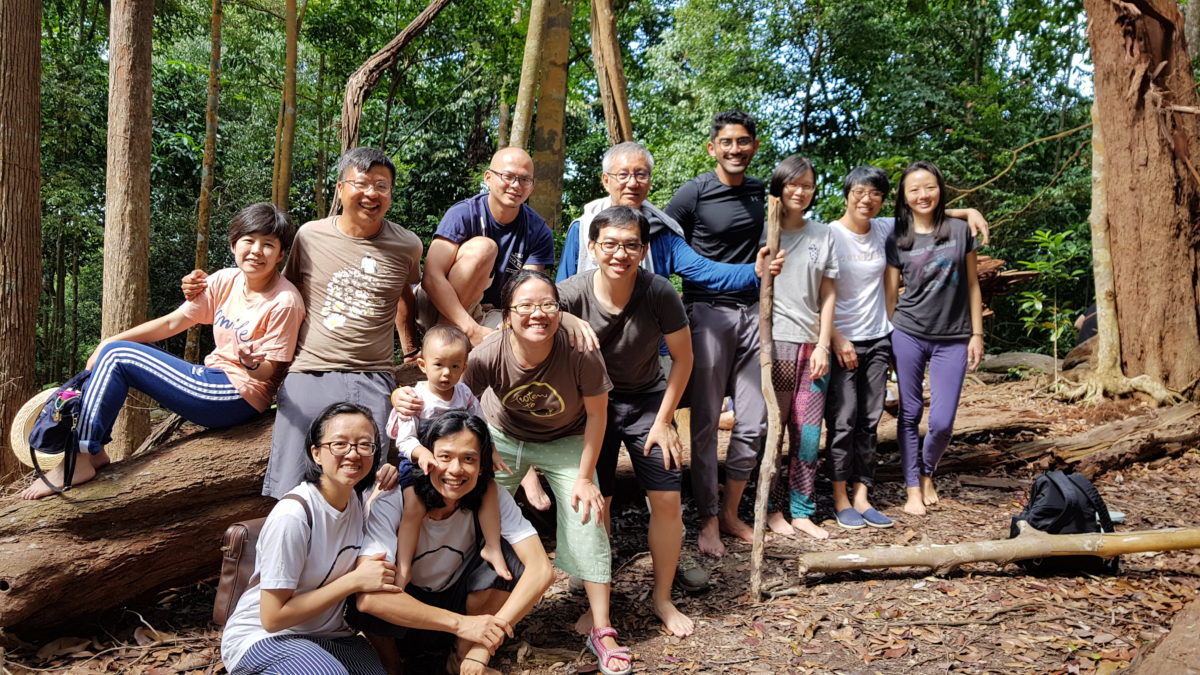
Joyful Garden Sangha (JGS) is located in tropical Singapore, also known as the Garden City, from which we derived our name. Inspired by the practice of mindfulness taught by our dear teacher, a group of friends formed the Sangha in 2008. In September 2010, we were fortunate to receive Thay and the Plum Village Sangha in Singapore, listen to his Dharma talks,

Joyful Garden Sangha (JGS) is located in tropical Singapore, also known as the Garden City, from which we derived our name. Inspired by the practice of mindfulness taught by our dear teacher, a group of friends formed the Sangha in 2008. In September 2010, we were fortunate to receive Thay and the Plum Village Sangha in Singapore, listen to his Dharma talks, and be in a retreat under his guidance. It was then that more fresh breezes were brought to the Sangha. Two months after the retreat, even though our Sangha was new and inexperienced, we organized our first public Day of Mindfulness and have continued ever since.
Today, we are a young Sangha flower with many petals: Wake Up, mindful educators, mindful helpers, all-ages, and the local Vietnamese community. This year, we took a leap of faith as a community to start Sangha Home, better concentrate our collective energy of practice, and be an urban refuge for more communities in Singapore.
Here are some of our Sangha members’ reflections.
Protecting the Sangha
by Daniel Nguyen
Throughout the existence of JGS, we have never ever had to worry about the Sangha being driven by personal power or profit, or political causes. We never take this for granted. Our members come into this community with a pure intention to practise, and the willingness to do and to be whatever necessary to create the best possible conditions for all to practise together. Some have the skills and time to play the roles of facilitator and coordinator.
Others are simply satisfied with being ordinary members and being present for the activities. Brother ST, one of our elders, always declares that he is more than happy to support from the background, but he will resurface any time the Sangha needs him. We play our roles, adjust the way we work, give space, and encourage other members to step up and grow—all with joy, flexibility, and the awareness that all roles are equally important and we just need to be what the Sangha requires at that point in time.
There is no space for personal power or profit—not even for seniority. Even when JGS was still a small and informal community, we were very careful with labels. Sister Puyee, Brother Lawrence, and others who assumed the leadership roles always humbly and skilfully referred to themselves simply as “glue,” emphasising they were just there to bind people together. When it was time for the Sangha to become an official registered society, as required by Singapore law, we enjoyed countless hours crafting the society constitution, so that the practice of understanding and compassion would be placed at the core of why we exist. With the introduction of the mandatory titles “president,” “secretary,” and “treasurer,” it was once again clear that nobody had any interest in holding those positions for power or profit. The society president continued to call himself “the glue.” Brother Ivan always said he could not wait to hand over the Sangha’s wallet to the next treasurer.
Some sisters and brothers in the Sangha have gradually started to switch their careers and make their living by offering mindfulness practice to corporations and organisations. It warms my heart to see how they always carefully avoid any possible conflict between their own business and the Sangha activities, never ever having the thought of promoting their business by using the name or reach of the Sangha. With the Sangha now growing, a physical centre to manage, and a much larger bank account to handle, the Tenth Mindfulness Training will surely continue to hold the Sangha together and keep its essence strong and its aim clear.
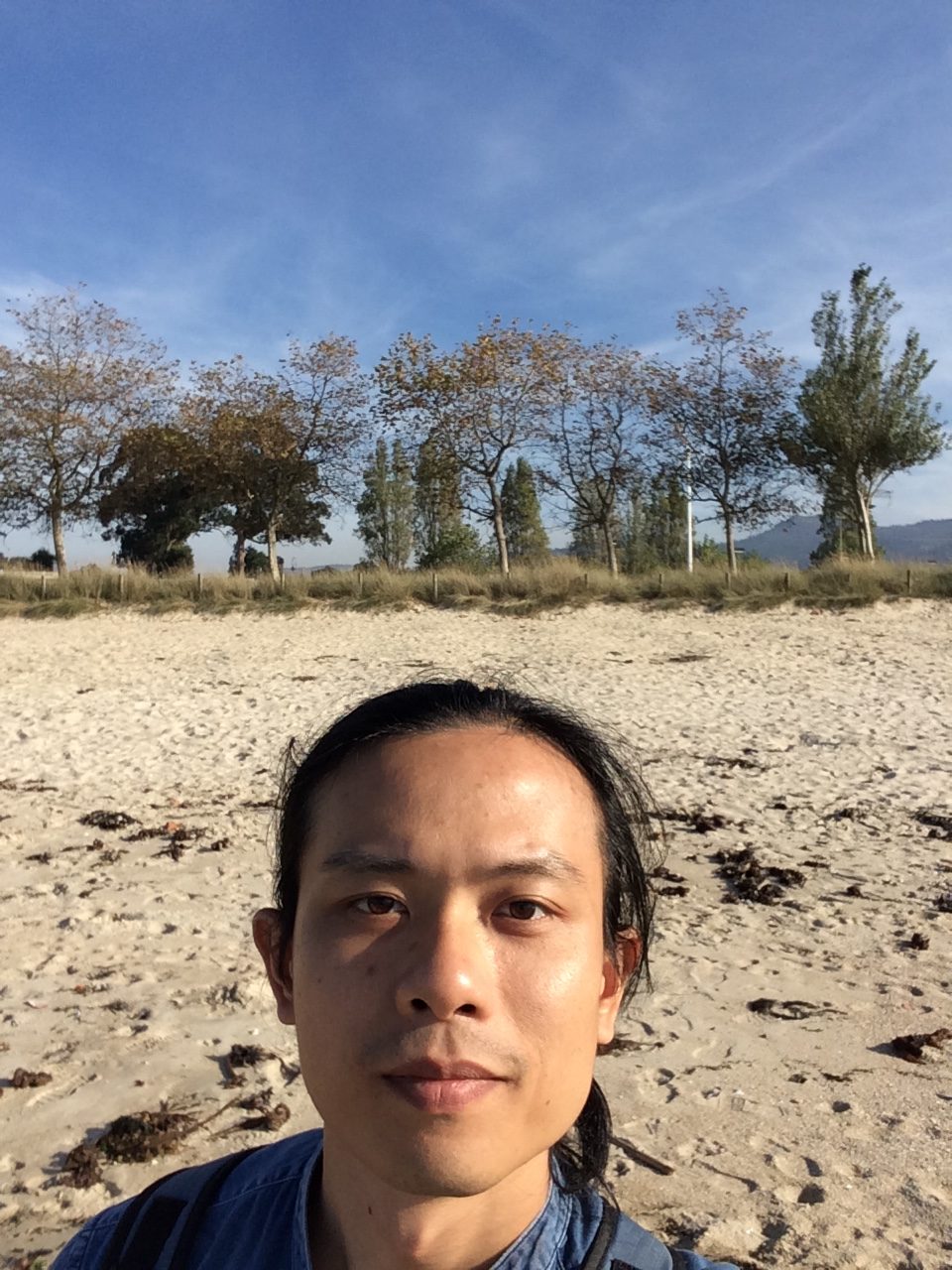
Daniel Nguyen, True Forest of Mindfulness, practises with Joyful Garden Sangha and takes care of its online home. A freelance web developer, he also looks after the websites of Potential Project, an international firm that brings mindfulness to the corporate world, and XanhShop, a Vietnamese group of natural farmers and Earth lovers.
“In the beginning, how the Sangha already brought alive the Six Harmonies inspired me. As a Buddhist, I never saw this in a lay Sangha. Flowing as a river was totally new to me, and it took me some time to get used to this practice.
But as years went by, I got to know my Sangha members better, and I now instinctively trust them to make the best collective decisions, even if my limited wisdom may inform me otherwise.
I begin to understand what it means to take refuge in the Sangha.”
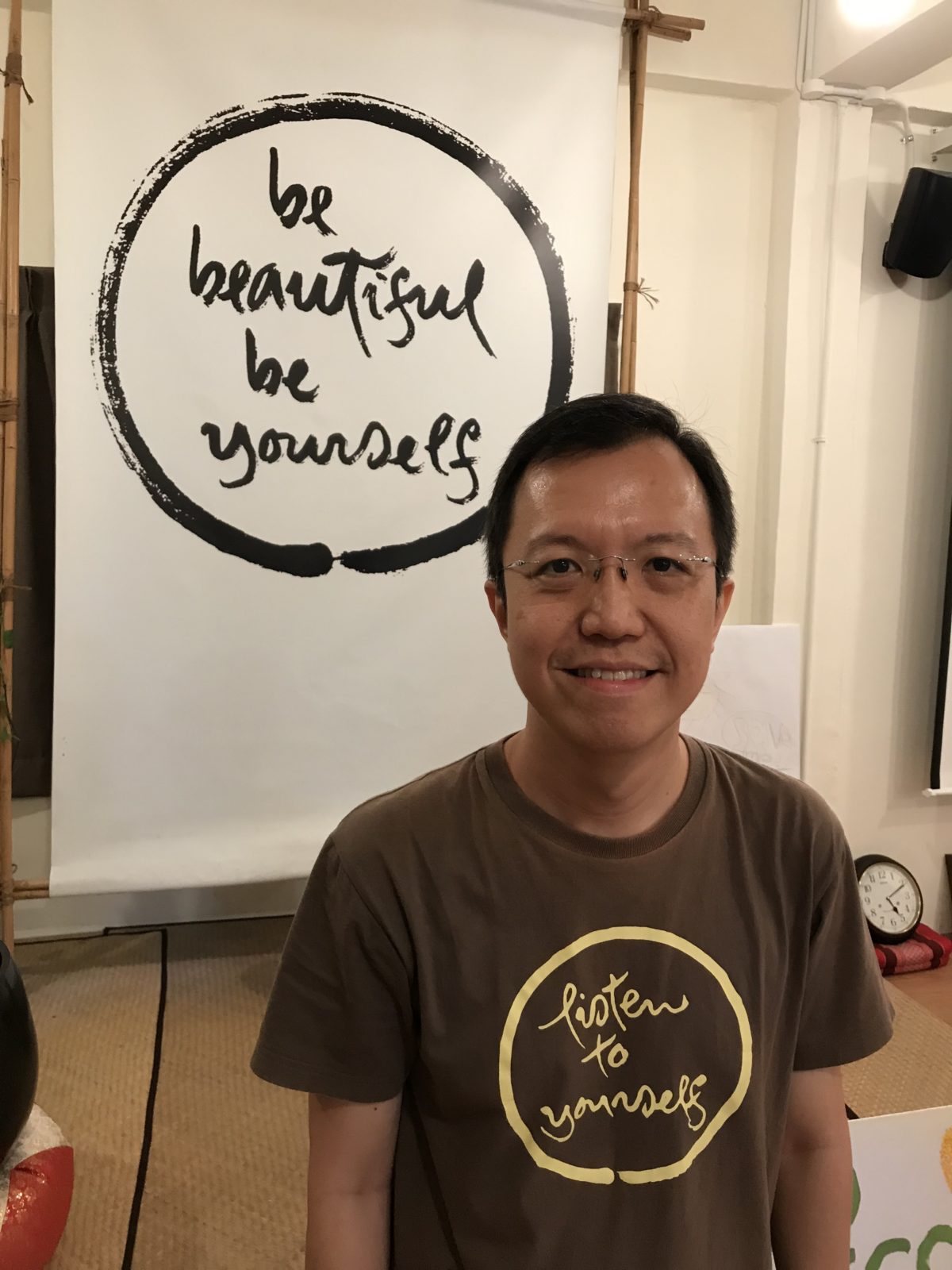
Ivan Loh
True Birthlessness
The Insight of Interbeing
by Gia Hoang
I used to be a competitive person, trying to win social acceptance with my academic achievements and feeling good when I was “better” than other people. At times, I felt jealous when others seemed to be “better off” than I was.
In 2008, I attended my first retreat with Thay. Before every chant, he would ask us to let go of the superiority complex, the inferiority complex, and even the equality complex, to become one with the Sangha and the chant. It took me a long time to comprehend and appreciate this teaching.
During the early days in the Sangha, I read Thay’s poem “Please Call Me by My True Names” and found it beautiful. I really liked the song that was composed from this poem. But I had not yet grasped its depth.
About ten years later, when I listened to the song again, I appreciated it more. Tears flowed down my face as I listened to my husband, Brother Daniel Nguyen, sing this song during one of our Sangha evenings. I heard a calling deep in my heart to understand the human mind, help relieve the suffering of others, and create more joy and happiness in the world. I am now working as a counsellor in Ho Chi Minh City.
The insight of interbeing has helped me in my work to have empathy and respect for the clients I serve. When I see my clients going through a tough time, I can appreciate the struggles they are experiencing and know we are not different. Sometimes when I look at my loved ones who are suffering, I can see that if I were in their situation, I would suffer in the same way.
The insight of interbeing has given rise to compassion, a strong desire to alleviate the suffering in myself and in others. Just as I wish to be happy, peaceful, and free from suffering, I wish the same for others. I do what I can to help my loved ones and my clients with their suffering: by being a witness to their stories and by appreciating them as they are, I see the struggles they go through as human beings, and I journey with them to find ways to address their problems and accept things that are outside their control. By helping others to learn ways to have richer and more meaningful lives, I see that my own life is enriched.
The insight of interbeing helps me to see myself in others, and overcome the inferiority and superiority complexes. I have not yet fully comprehended how to get past the equality complex, but I’m still learning and practising. Right now, I am a little better at enjoying the success of others, and embracing their suffering and weaknesses. This gives me freedom and satisfaction as a human being, a family member, a friend, and a counsellor.
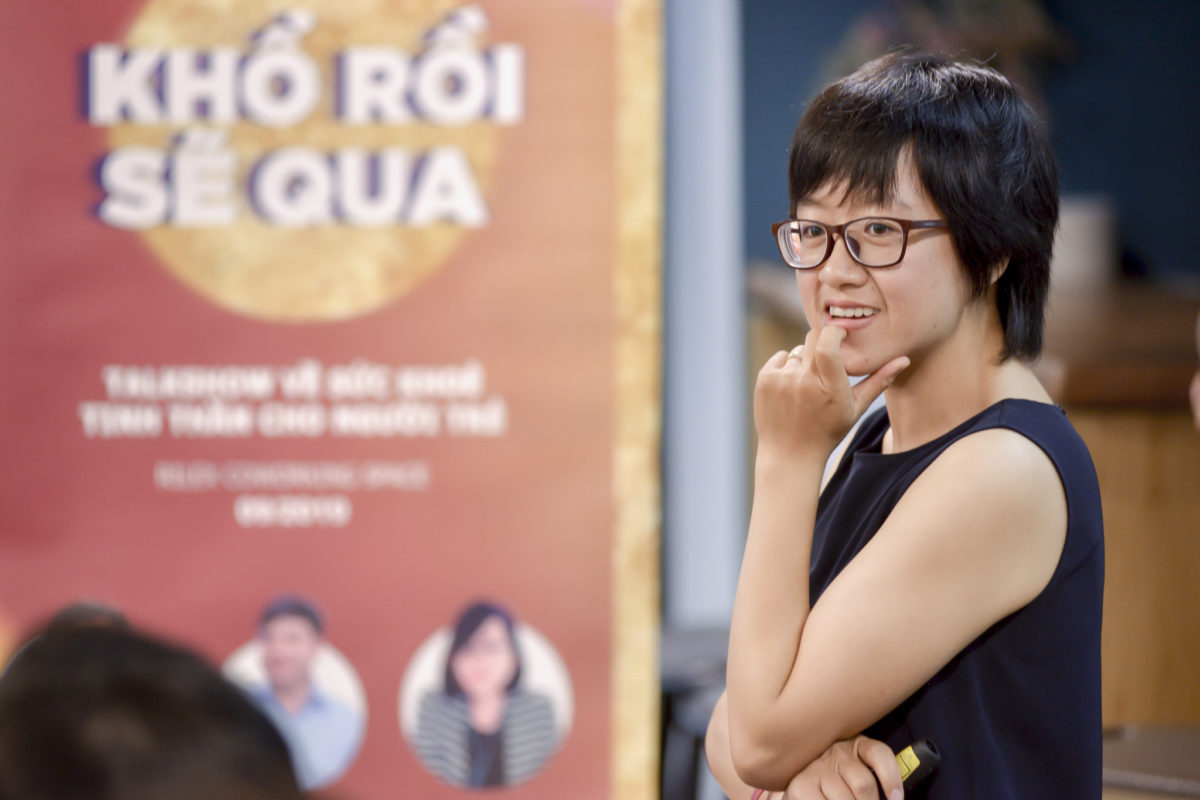
Gia Hoang, True Forest of Concentration, is one of the pioneer members of Joyful Garden Sangha. She works as a counsellor in Vietnam.
Sangha Building
by Lawrence Goh
Our Sangha is ten years young, and we benefit from the paths our older siblings and pioneering members have walked. I have collected various treasures from Dharma talks and guidance from our monastic sisters and brothers. Over the years, this is what I have found beneficial as a personal form of a “north star” for Sangha building.
Practice Comes First
I became more active in the Sangha around 2012 after attending Days of Mindfulness that nourished me greatly. One of the founding Sangha members provided some advice over coffee before she left to join the monastic community. Her words continue to resonate each time I find difficulty in Sangha building: the community comes together to practice; otherwise, we’re no different from social groups.
She asserted this very firmly. Looking back, it is indeed wise advice. It takes time for a new Sangha to form. If we relied on “liking” or “sameness,” we would soon find ourselves forming cliques and having people walk away. The practice, especially the deep listening and skillful loving speech of sharing circles, helps me remain open to let others be. I have to sit with my likes and dislikes surfacing in my mind and learn to practice asking, “Am I sure?” To watch people “flowering” is a beautiful process, revealing each petal of their being. From there, we can truly understand each other and form strong bonds to weather future storms.
Don’t Be in a Rush to Grow Up
Members of our elder sibling Sangha in Hong Kong shared how they missed the days when they were young and had much fun coming together. They advised us not to rush into doing more work to grow up.
These words of advice have reminded us not to rush into projects the Sangha does not feel ready for. We learn to enjoy and use what we have, rather than acquire more “cows” (material goods and achievements).
When we lost our practice venue, we looked around for different spaces to hold Days of Mindfulness. Over the past few years, we tried and switched various locations. Despite the inconveniences, we have enjoyed the freedom of being nomadic and not having “cows” to look after. This has helped the Sangha grow stronger, as we have learnt how to mindfully face adversity.
Practice Non-Fear
One of the challenges in our Asian culture is that we wish to maintain “niceness,” not risking offending or humiliating people. This means that even if there is some disagreement or conflict, we believe it’s best to not bring it up. We just pretend things are okay. Without mindfulness, one can easily get away with it.
The consequence, however, is that there is no opportunity to transform suffering, and the beautiful practice of Beginning Anew does not take place. As Order of Interbeing members, we have had to step forward and boldly disclose what we experienced and observed, and ask the Sangha to address it head on. I believe this activates not just the Sangha eyes, but also the heart, and the courage to compassionately embrace disagreements and help transform them. Without such actions, the Sangha could have broken up into factions.
Trust in the Process
Singapore is an efficient society, pragmatic, and task-focused. To enter into such a mode when it comes to planning, organizing, and decision-making in the Sangha can be very tempting.
What we have learnt from our monastic communities is the art of drinking tea, coming together to meet and listen to each other. In fact, some key movements and decisions take place when we meet casually over coffee at the end of a Day of Mindfulness.
I have kept this phrase close to my heart: “the Sangha is an organism and not just an organisation.” We are a living collective. We learn to appreciate being messy, allowing space to breathe and pause. We allow ideas, plans, and opinions to take rest in our consciousness while we continue to practice. To just enjoy the present moment is a challenge—or perhaps a rebellion against a culture of anxiety and attainment. Wondrously, important decisions do get made and things get done. Sometimes we let things drop along the wayside.
This for me is true faith at work, taking refuge in the Sangha for decisions and actions, and flowing with the river.
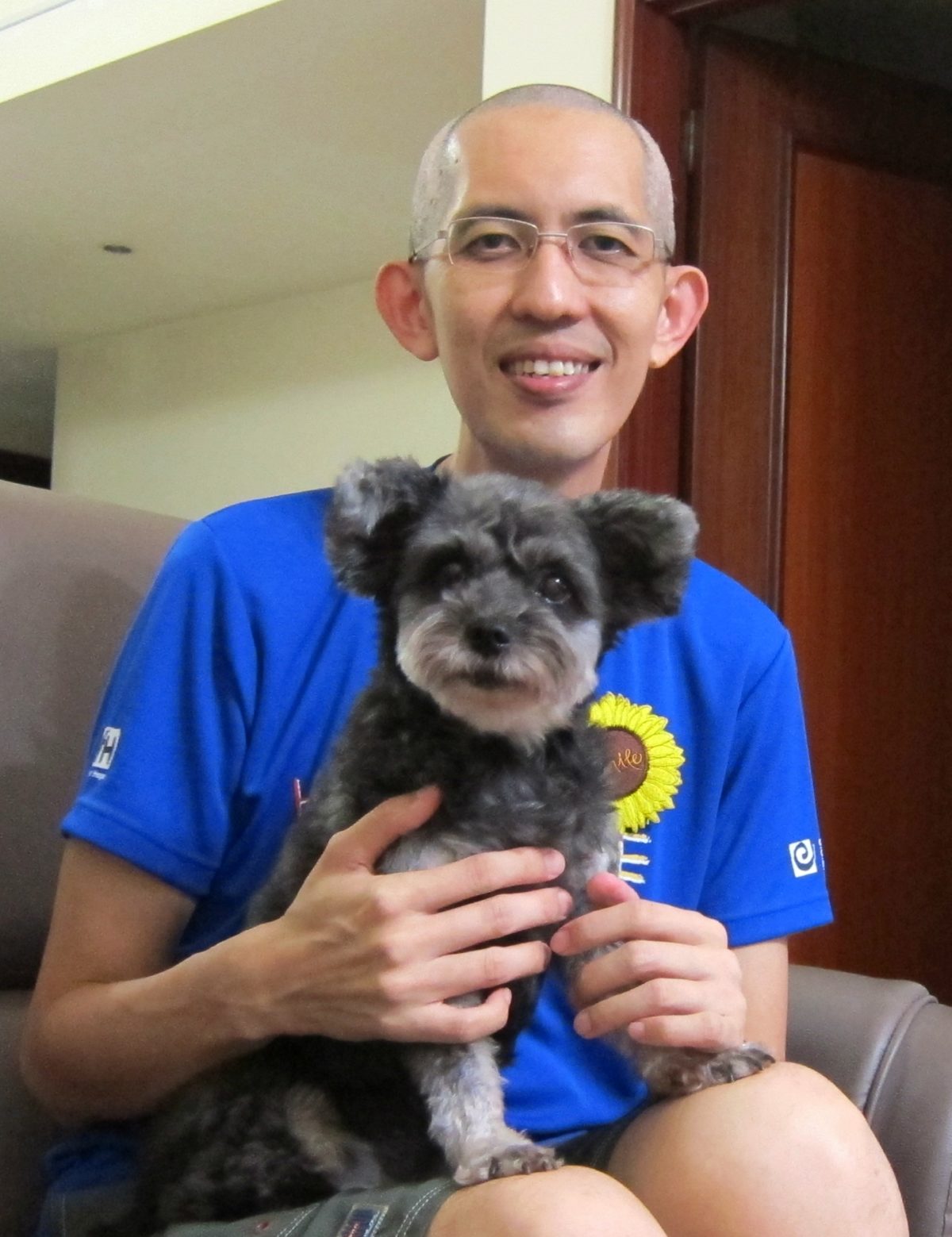
Lawrence Goh, True Forest of Compassion, lives in Singapore and works as a counsellor therapist.
“Two years ago, eleven of us came together for Wake Up. Now, here we are, five times bigger than what we used to be. We just showed up every Monday night, and the rest was up to the universe. It wasn’t even comfortable sitting together, yet we tried every week. We were new to the practice, vulnerable, and passionate to learn. Sometimes our circle had only three or four people. Yet, they were the deepest and most intimate sharing circles we ever had. We shared difficulties in our practice and daily life. We shed tears of healing. We hugged. We felt home.”
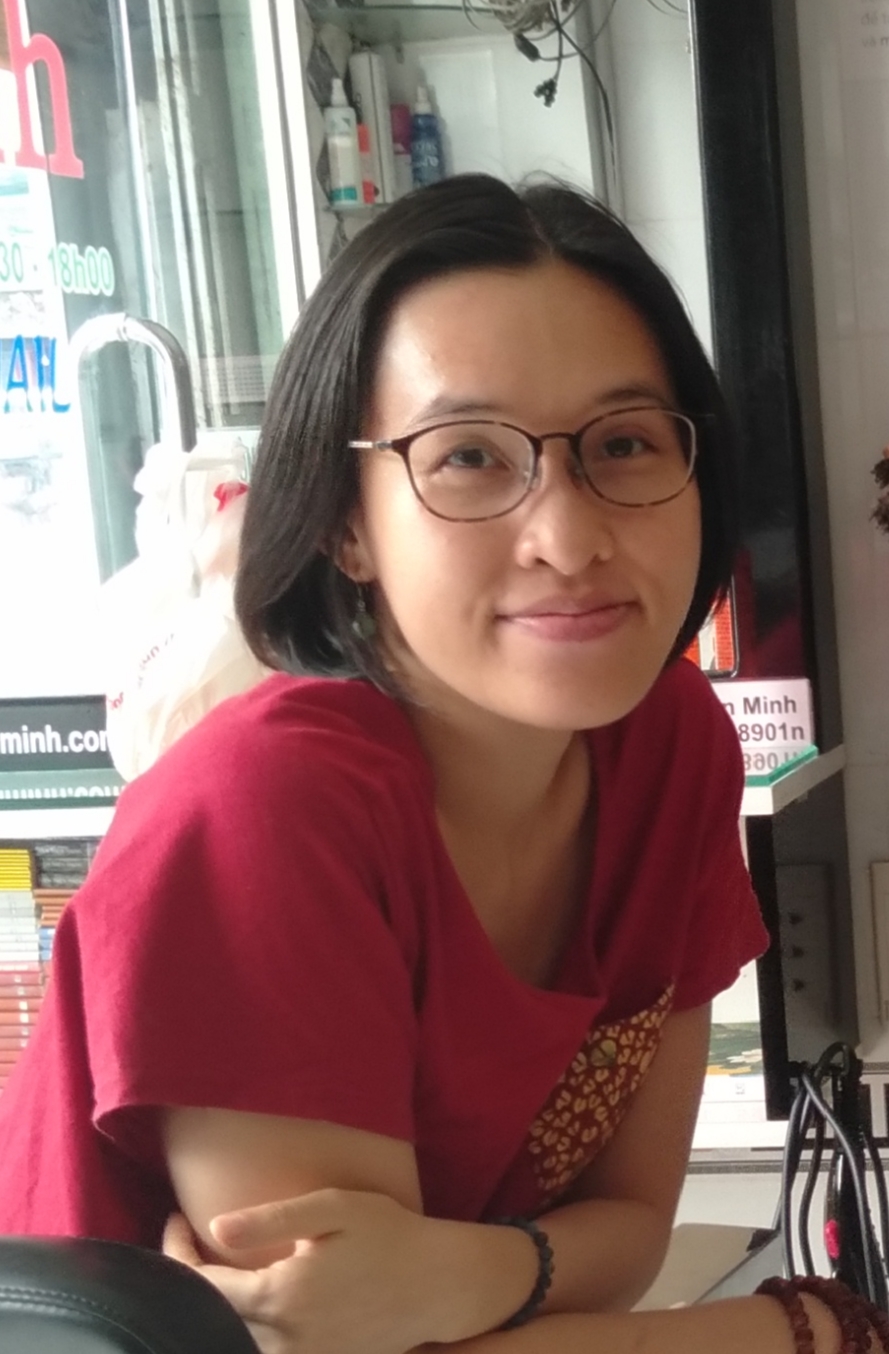
Thuc Anh
Peaceful Chanting of the Heart
“I am a work in progress. I aspire to confidently introduce myself as a mindfulness practitioner, not just in my personal life but in corporate life as well. I yearn and hope for our Sangha Home to be a place of refuge for all, including weary-working professionals. In Brother Phap Dung’s words: a place of resistance from the rush and from the desires of fame, power, and wealth. May our Sangha be a cool urban community of joyful ‘resistors’!”
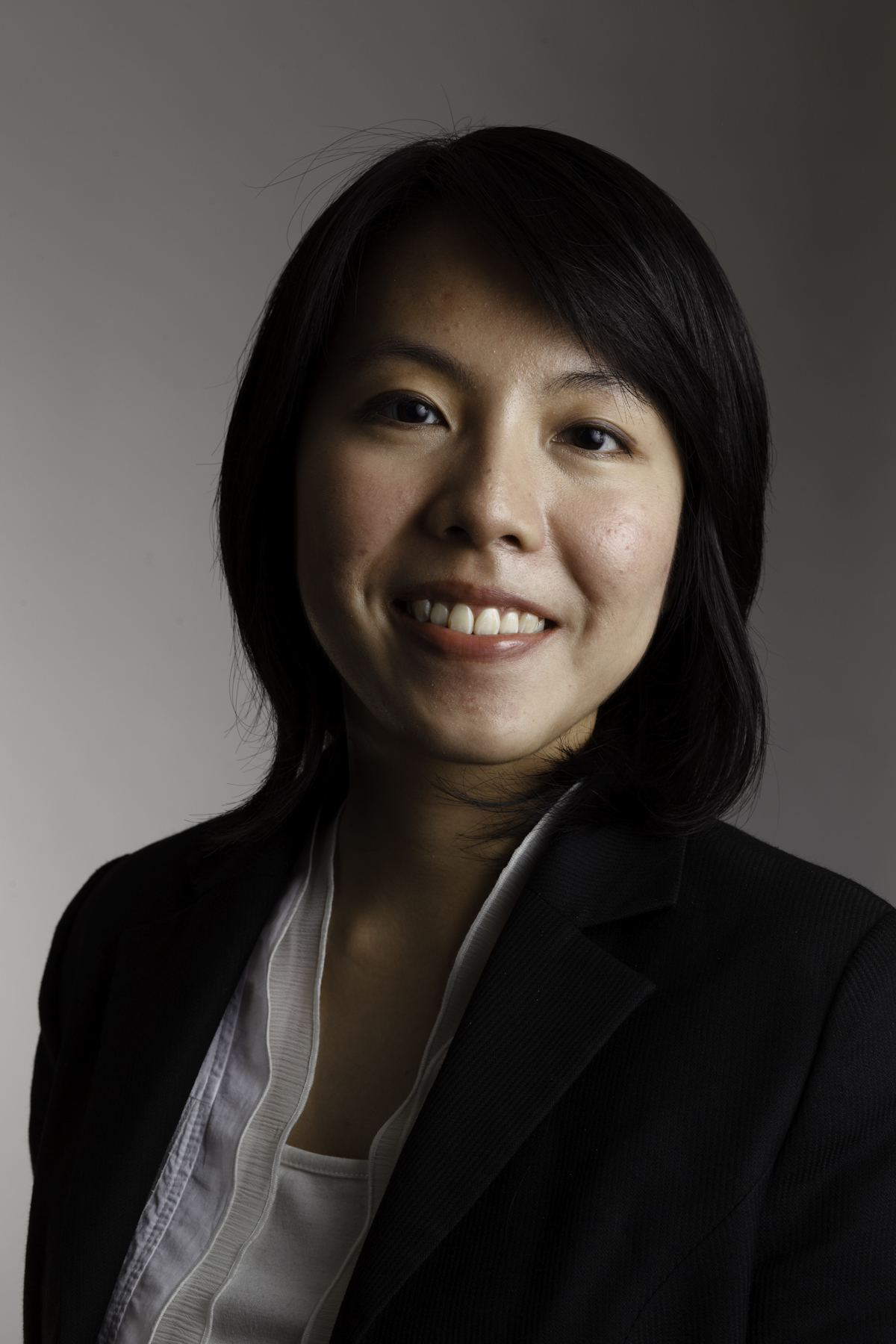
Michelle Tan
True Completeness Moon of the Heart
No One Can Be By Themselves Alone
by Lin Qingxiu
Mindfulness retreats in 2014 and 2018 have given me an opportunity to touch a space within me, which other Buddhist rituals could not. As a beginner in this practice, I became less inclined to practice alone as I slowly opened up and saw what taking refuge in the local Sangha could be.
To be open to everything and attached to no-thing during every sitting and sharing circle with the Sangha has helped me to learn ways to take care of my emotions, perceptions, and mental formations, and to flow together as a river. I remember having to practice at different locations with the Sangha, taking physical refuge in temporary homes of brothers and sisters. This came with many inconveniences, but I was offered insights along the way, as I grew more tolerant of incompleteness around and within. I came with a notion that this was a support group where all problems can be solved, but I found reality is often kinder than that.
When we practiced sitting together, there were times I had to go along with unexpected invitations to help facilitate. This became a space to just be, as I became less fixed on my views of not knowing enough to offer to others and trusted in the collective energy, flowing with what was. Cultivating the practice requires trust in myself and in the continued presence and commitment of my dear spiritual brothers and sisters. No one can be by themselves alone. Sometimes, I need another to see myself in them. Now, when at home, I can better remember to pause before my speech and actions log me into my old “computerized” ways of busyness and doing.
I am so grateful for this lived experience of interbeing, not that of an intellectual construct. This is possible because of the presence of dear brothers and sisters on this path, practicing regularly together as one Buddha Body.
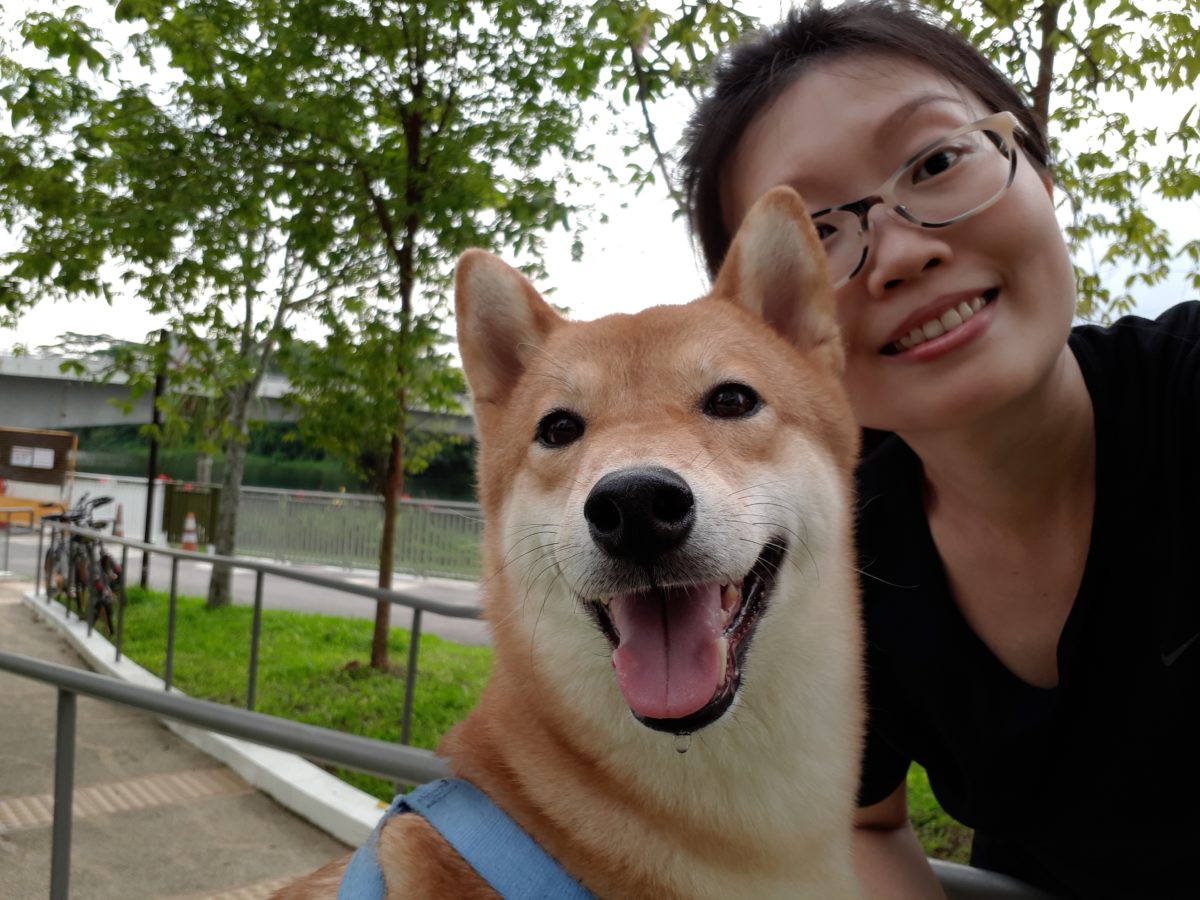
Lin Qingxiu, Compassionate Action (Thoughts) of the Heart, is a pet parent to three animals. Her dog and adopted cats are daily reminders of simple things in life to be thankful for and to practice mindfulness with.
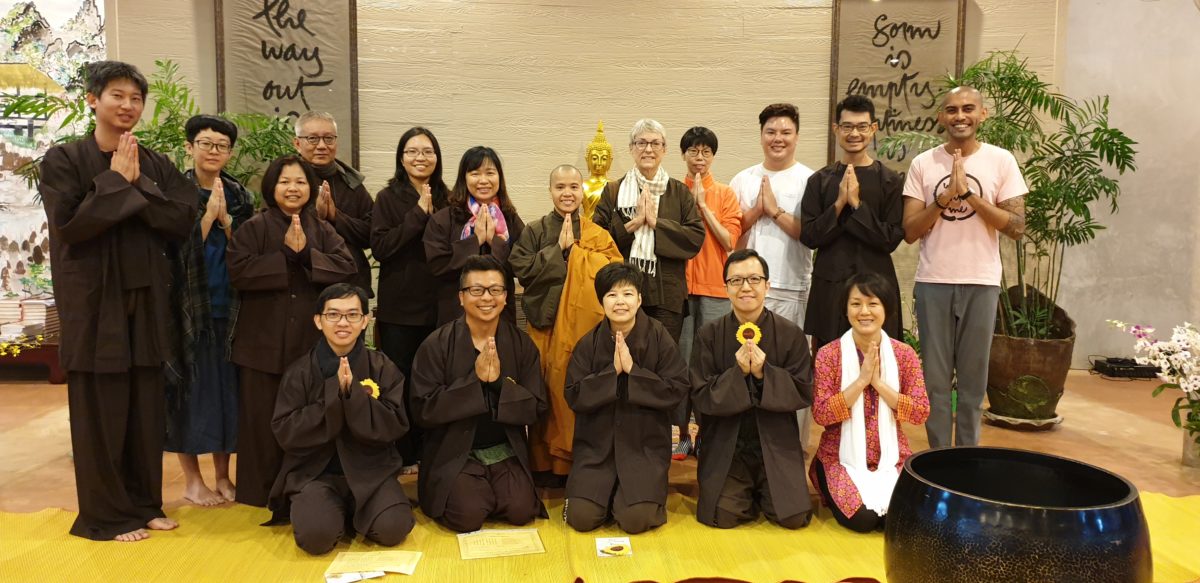
“Sitting together with our brothers and sisters, we took our time, eight to nine practice sessions over two months, dreaming what we want the new Sangha Home to be. It was a great satisfaction for me to be part of it, no longer just knowing how to flow with the river, but actually experiencing it. It’s leading me to the next level of understanding.”
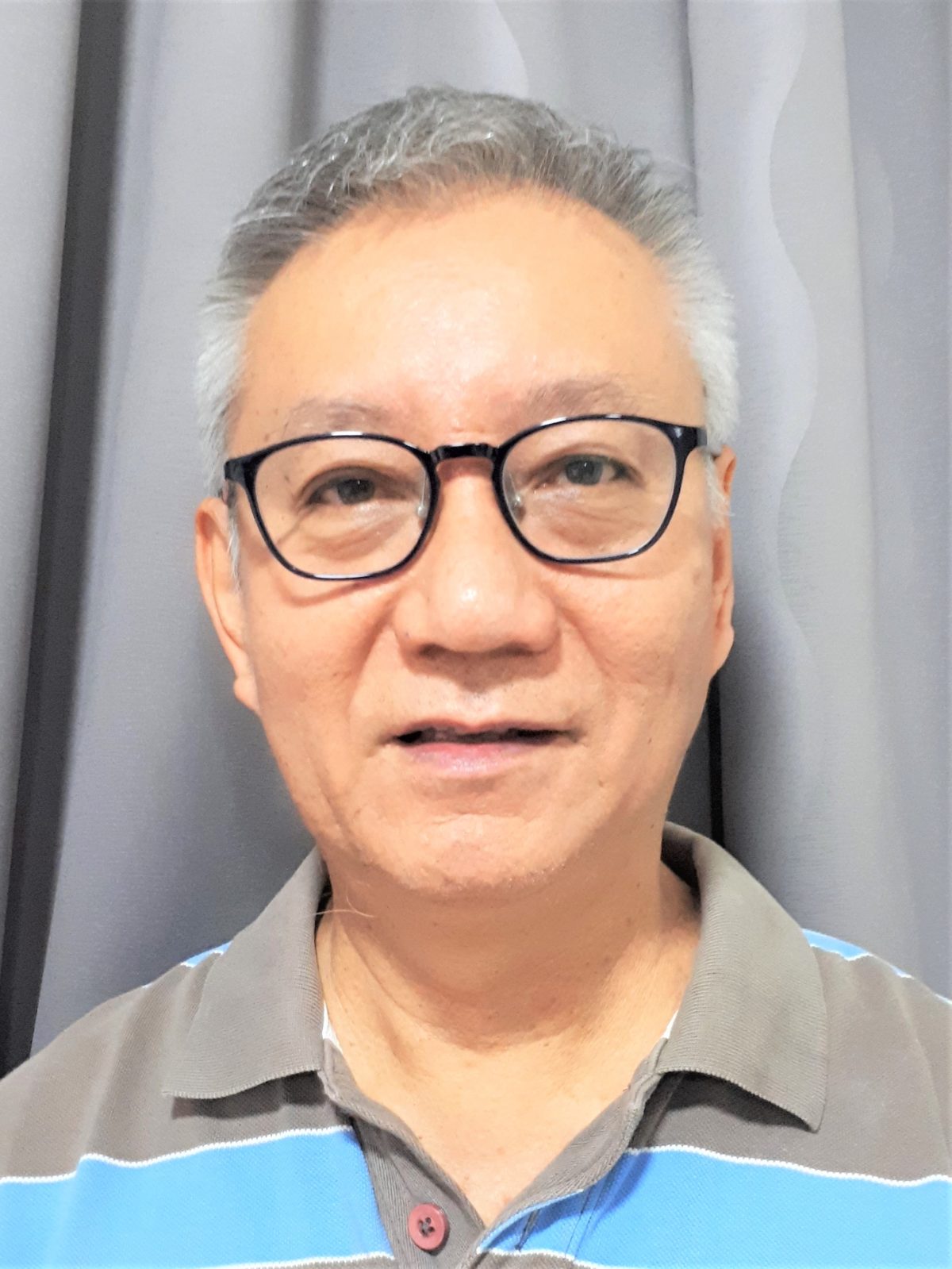
Alvin Lim
Mountain Refuge of the Heart
Embraced by the Sangha
by Geoffrey
When I reflect on my journey with the Sangha, it brings up a sense of being held. I had been practising on my own or with various centres for a long time, until I returned to Singapore and felt, deep down, a need for support in my practice. I began to join Days of Mindfulness with JGS in 2012, joined more activities outside of Days of Mindfulness, and eventually began helping out. Through the practice of love and understanding, the Sangha has held all the different parts of me and what I value, and I have learned to do the same for others.
Embracing Each Cell: Spaciousness and Inclusivity
My grandmother, my father, and my (now) wife attended a JGS retreat, and the Sangha embraced them all in many different ways. Everyone demonstrated patience and support for my grandmother, who was challenged by a lack of mobility and language. The Sangha members come from a diversity of backgrounds, identities, and religious traditions. The natural acceptance of this, and the consistent efforts to make everyone feel comfortable, made me and my family feel safe and at home. My wife and I were also touched by the Five Awarenesses ceremony (a blessing of our upcoming marriage), which accommodated and respected our Christian faith. This sacred event was made possible by the Plum Village monastics, Joyful Gardeners, and retreatants. Through all of this, I have learned to practice deeply being leaves of one tree.
Holding Across the Tides of Daily Life
Two years ago, we began to practise in the Mindful Helpers Sangha, a JGS group that brings together community members who are healthcare and allied workers to support each other. I had been practicing for many years with my habit energies of taking on too much, being busy, and feeling a strong need to support everyone around me. By practising with others in my profession with similar experiences and aspirations, I am now better able to practice, recognising, understanding, and holding these energies. I have gradually seen the interbeing of my personal practice at home, at work, and in community—all flowing together as a river.
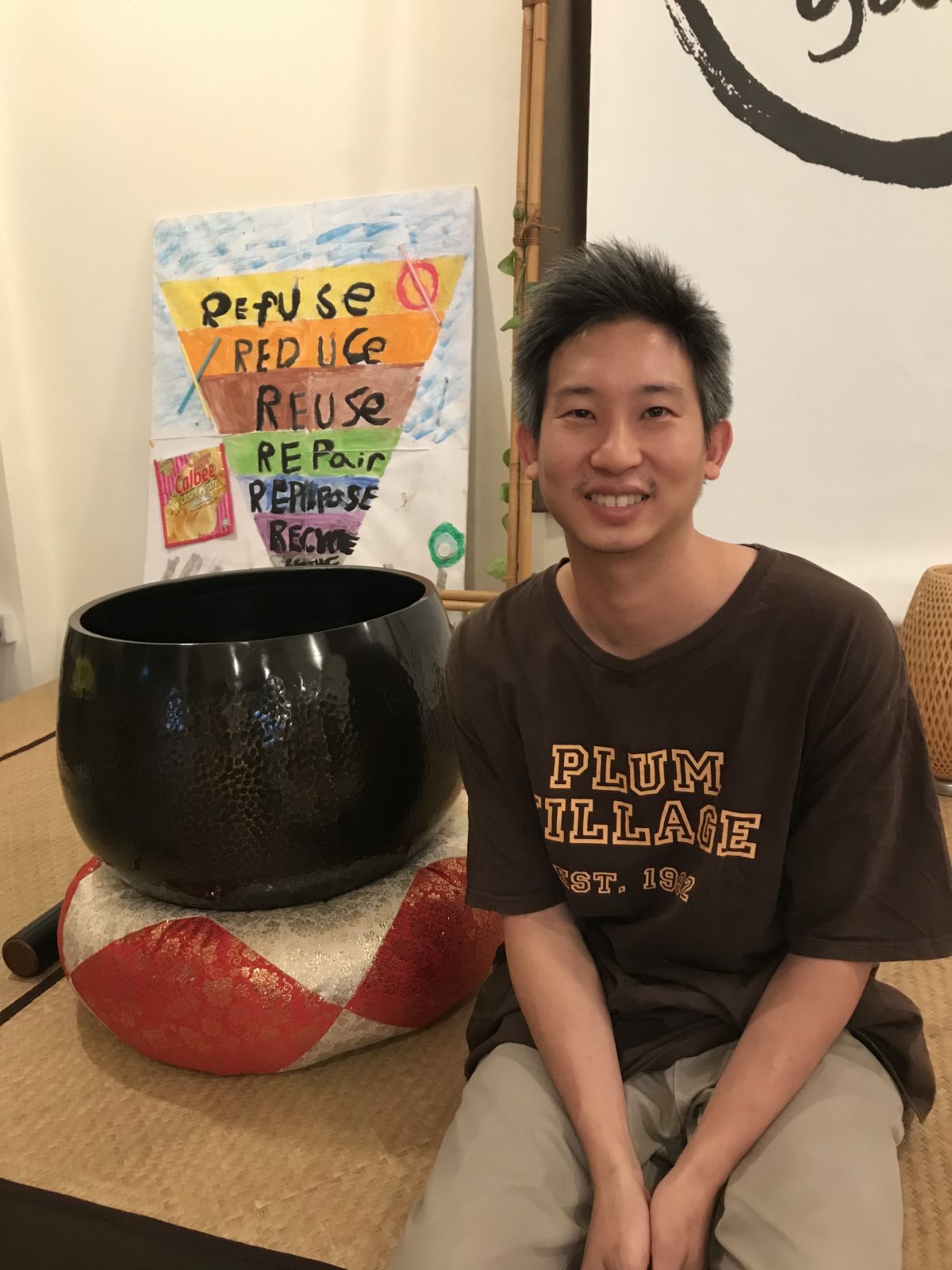
Geoffrey, True Forest of Manifestation, lives in Singapore, and shares one dog and two cats with his wife.
“Over the years, I realised the importance of Sangha. They become your family or even closer, to a certain extent. During sessions, we shared our struggles, joy, and love. I am far from where I would like to be in terms of my practice, but I never give up. I come home to my Sangha when I need support and reminders.”
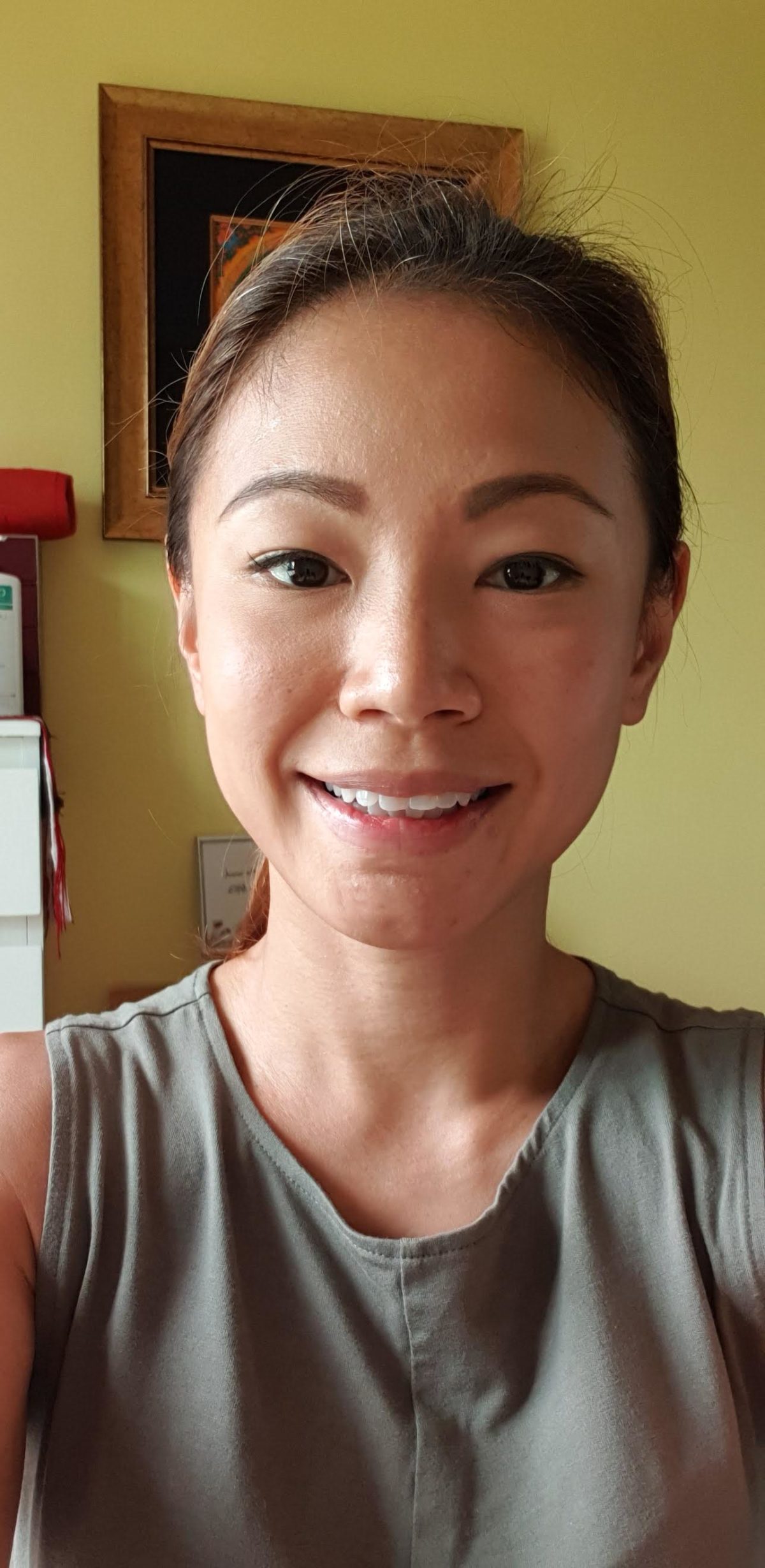
Mei Yee Chan
Awakened Compassion of the Heart
My Sangha Body
by Will Chua
I discovered my Sangha body six years ago and never knew I had a body like that. She is vast, old, wise, and ancient—especially the brown parts of her, the maha parts—and a little bit everywhere.
But she is also young. Here in Singapore, she is a growing, cheeky child ten years of age, a joyful garden full of possibilities. I like hanging out here. She is full of ideas and neurodiversity, faith diversity, racial diversity, sexual diversity, etc. She is so inclusive.
My Sangha body is a part-time Buddha clocking more and more waking hours each year, these days coming back to her breathing many times a week. Each of her evening meditation sessions lasts two or three hours; once a month she treats herself to a Day of Mindfulness, where she often grows and regenerates more living cells. She is addicted to Dharma talks on YouTube and is also a movie buff, having shared Walk with Me with the Singapore public eighteen times and counting!
My Sangha body is diligent and patient. It takes one to two weeks for her to mindfully scan and release tension in her whole body, starting with her youngish Wake Up cells on Monday, her mindful helper cells on Wednesdays, the remaining cells of all ages on Thursdays, and her educator and Vietnamese cells on weekends. She takes her time to totally relax.
My Sangha body is also solid matter, something I can now concretely touch. She recently manifested as a 2000-square-foot practice center, with beautiful calligraphies by Thay and a rooftop garden. There she always smells of fresh flowers, Brother Moses’ coffee, and natural incense, holding a great healing and joyful energy that renews all of us little red cells. She is an urban mountain cave.
My Sangha body practices interbeing in the Singapore Kampong Spirit—a longing for the sense of community and resilience—with the help of wonderful technology. Recently, I was surprised to find myself interbeing with twenty-one active Whatsapp chat groups! Wake Up, Order of Interbeing Family, Thursday Practice, Joyful Germs, JGS Service Meditation, Interfaith Meditation, Joyful Farmers, etc. What a Kampong body we have, every cell interwoven together. Not an hour passes without Whatsapp reminding me that I have a Sangha body. Bells everywhere. Buddha help us!
Two or three times a month, my Sangha body also gratefully receives living Dharma nutriments via online calls with elder teachers and cells of our maha body, Sister Luong Nghiem and Sister Trish Thompson. They look after her with their great love like her immune system, and help her forge new neural pathways with their great wisdom. Once a year, she goes on a road trip to Thai Plum Village to recharge.
My Sangha body aspires to balance practice, study, service, and play. She annually supports the Singapore LGBTQ+ community, joins Taize music sessions, goes on road trips, plays badminton, and plants trees. Wanting to get more engaged, she supported the student climate crisis rally last September.
My Sangha body is not perfect. Sometimes she falls a little ill and has low energy. Sometimes she is sad when some of her cells have to leave. Sometimes she tries to do too many things and forgets to rest. Often she finds herself conflicted about certain decisions, with mixed voices and feelings in her head and heart. Other times she needs to be brave and have difficult conversations with herself. But she listens to her heart deeply and always reminds herself that harmony in all parts of her body comes before anything else. She knows Thay and the mahasangha body are in her and are there for her.
I am so grateful for my Sangha body and love her deeply. I know she is there, and I feel comforted and contented when I’m in touch with that insight. I know that all my other bodies, my ancestors and their suffering, will be embraced and carried by her across time and space. She also entrusts herself to me, even when I feel I don’t deserve it, gifting me a deep sense of meaning. So I take refuge in her, and like my late father used to say: “Offer your best; that is enough.”
My Sangha body is the fruit of our consistent, collective concentration on understanding and love; it’s an honor to be a cell. May she bloom beautifully for generations to come, walking gently on Mother Earth.
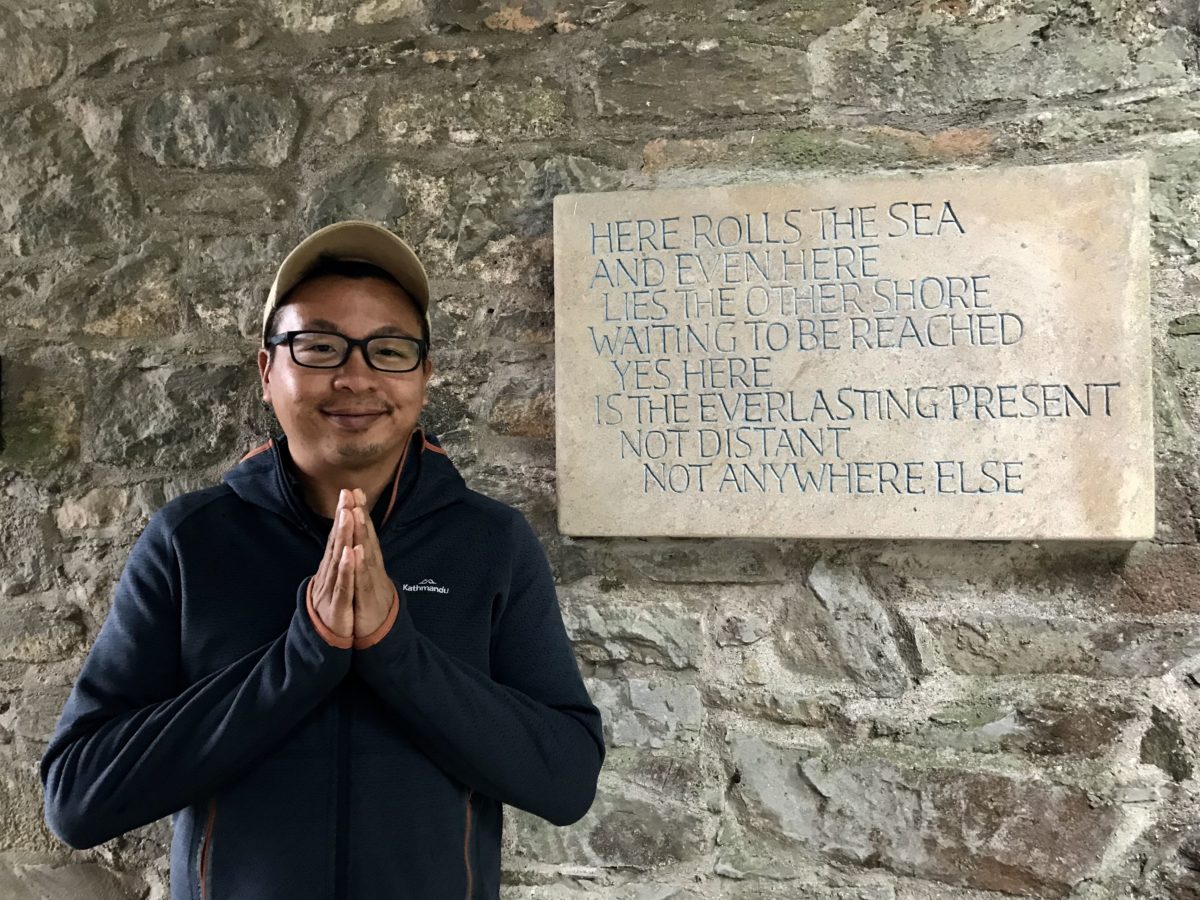
Will Chua, True Fearlessness, started a community farm with family and friends to transform three tonnes of city food waste for composting every day. FOLO farm—Feed Our Loved Ones—was founded on the Plum Village teachings of true love and no mud, no lotus.
“As an expat living in Asia over the last five years, I have found it tough to allow myself to feel grounded during my time here, whether due to my busy travel schedule or deeper fears of letting go and losing myself. JGS has helped me to rediscover the path to transform my suffering and live with more mindfulness in my everyday life. Because of that, JGS is now my true home and refuge in Singapore.”
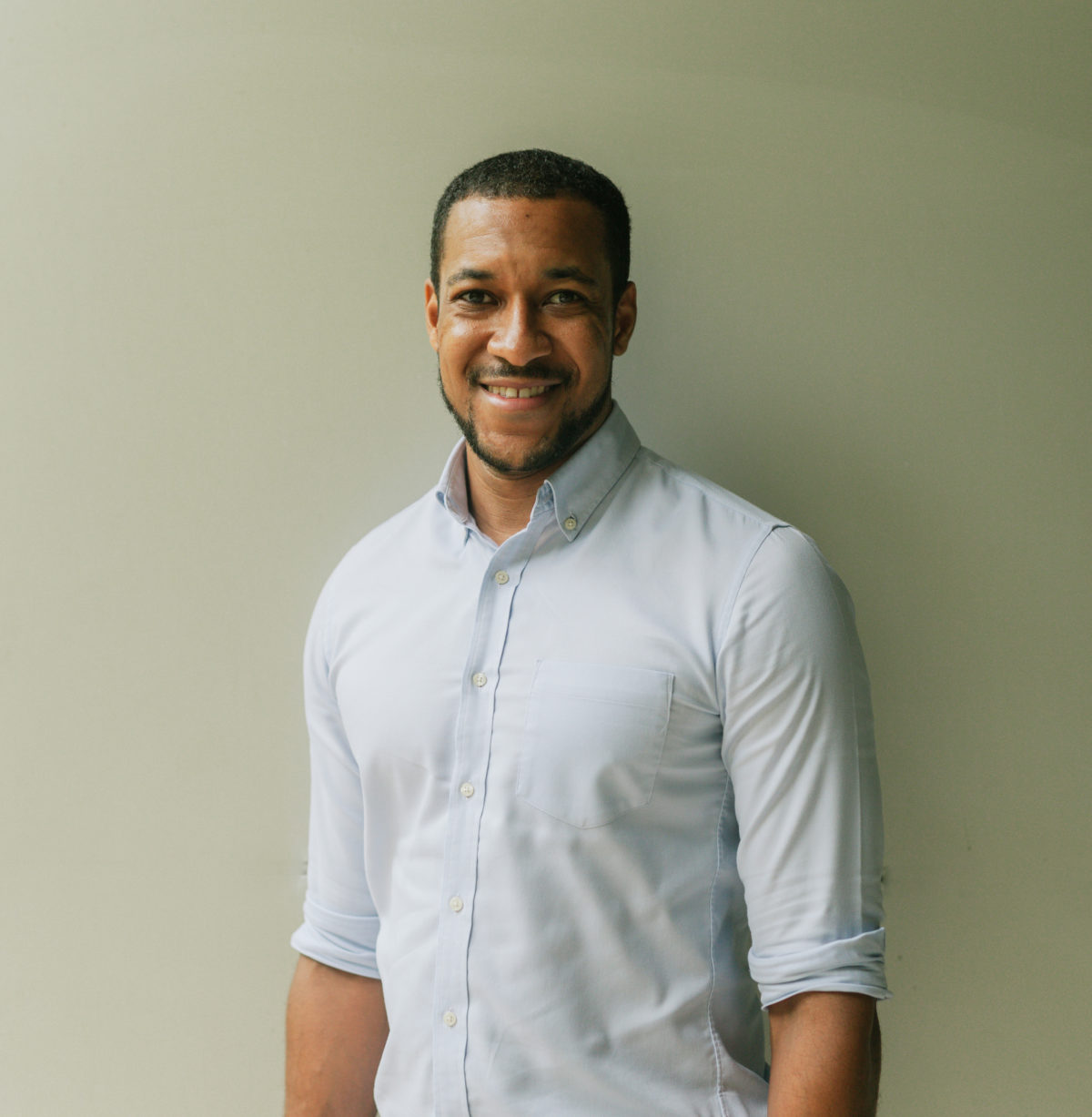
Jerome Axle Brown
Healing Breath of the Heart
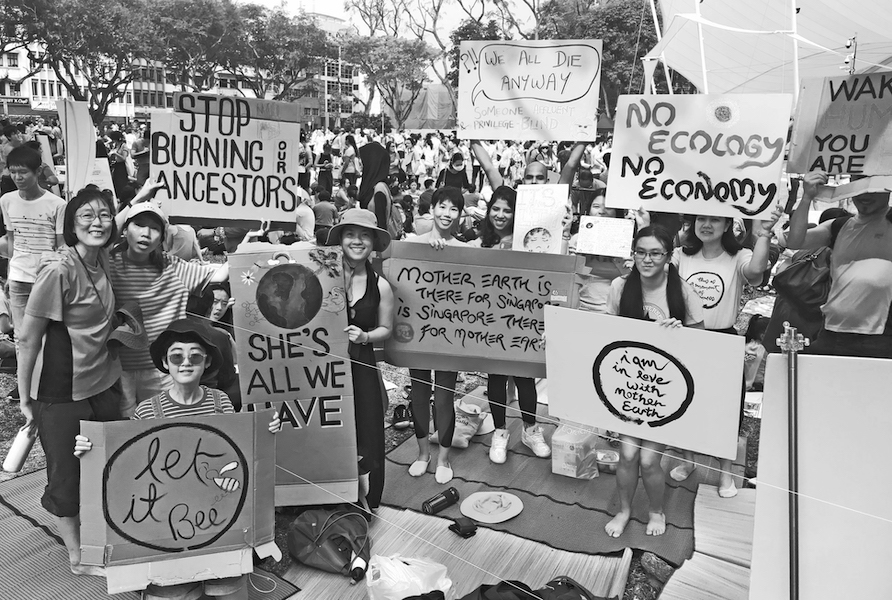
A Sangha Body to Deepen Three Circles of Connection
by Ho Gia Anh Le
One of my students asked me last week: “What is the meaning of mindfulness practice for you?” I said, “It’s an essential survival skill that keeps me sane in this age of distraction.” Now if someone asked me, “What is the meaning of the Sangha?” I would say, “The Sangha body helps me nourish and deepen the three circles of connection: self-care, care for others, and care for Mother Earth.”
I have been living in Singapore for twelve years. In my first five years I felt so disconnected, lonely, lost, and isolated in the mega-office where I came to work and earn a living. Home for me was somewhere else where I went for holiday. I was so disconnected from myself, other people around me, and the Earth. After five years, I got burned out and wanted to quit. Fortunately, I found this beautiful path that led me to my first retreat in Plum Village, France, in July 2012, and to JGS in May 2013. Since then, I have been learning to come home to take care of myself, other people, and the Earth.
Self-Care
The Sangha body is a place of healing, where I come every week to practice mindful breathing to help take care of my body, heart, and mind. Sometimes, when I feel stressed because of my work, travels, and projects, I need to return to the practice to recharge. I know I always have this Sangha body to return to whenever I remember to take a deep breath and a mindful step, remembering my intention when I received the Five Mindfulness Trainings: to cultivate more compassion in myself, heal myself, and help heal others.
Care for Others
The Sangha body is a place of refuge for all of us, no matter where we come from and what background we have. I am grateful for the JGS brothers and sisters and the love, care, and support they have given me in the past six years. Singapore has become a home for me, thanks to JGS. As long as we still have our practice and continue to deepen our practice to balance study, practice, work, and play, Joyful Garden Sangha will continue as an urban garden of love where we come to take care of each other.
Care for Mother Earth
I am truly grateful that our Sangha decided to dedicate our practice to the Earth Holder community last September. Most of the time, I feel myself sinking into despair about the climate crisis. The Sangha body reminds me to take care of myself and cultivate more joy and nourishment in myself, so that I can help heal Mother Earth. The insight of interbeing taught me to practice touching Mother Earth in me, cultivate more love and understanding in myself, and act with compassion and wisdom in the face of the climate crisis. I am grateful for the Sangha body for helping nourish that compassion and wisdom together through weekly practice.
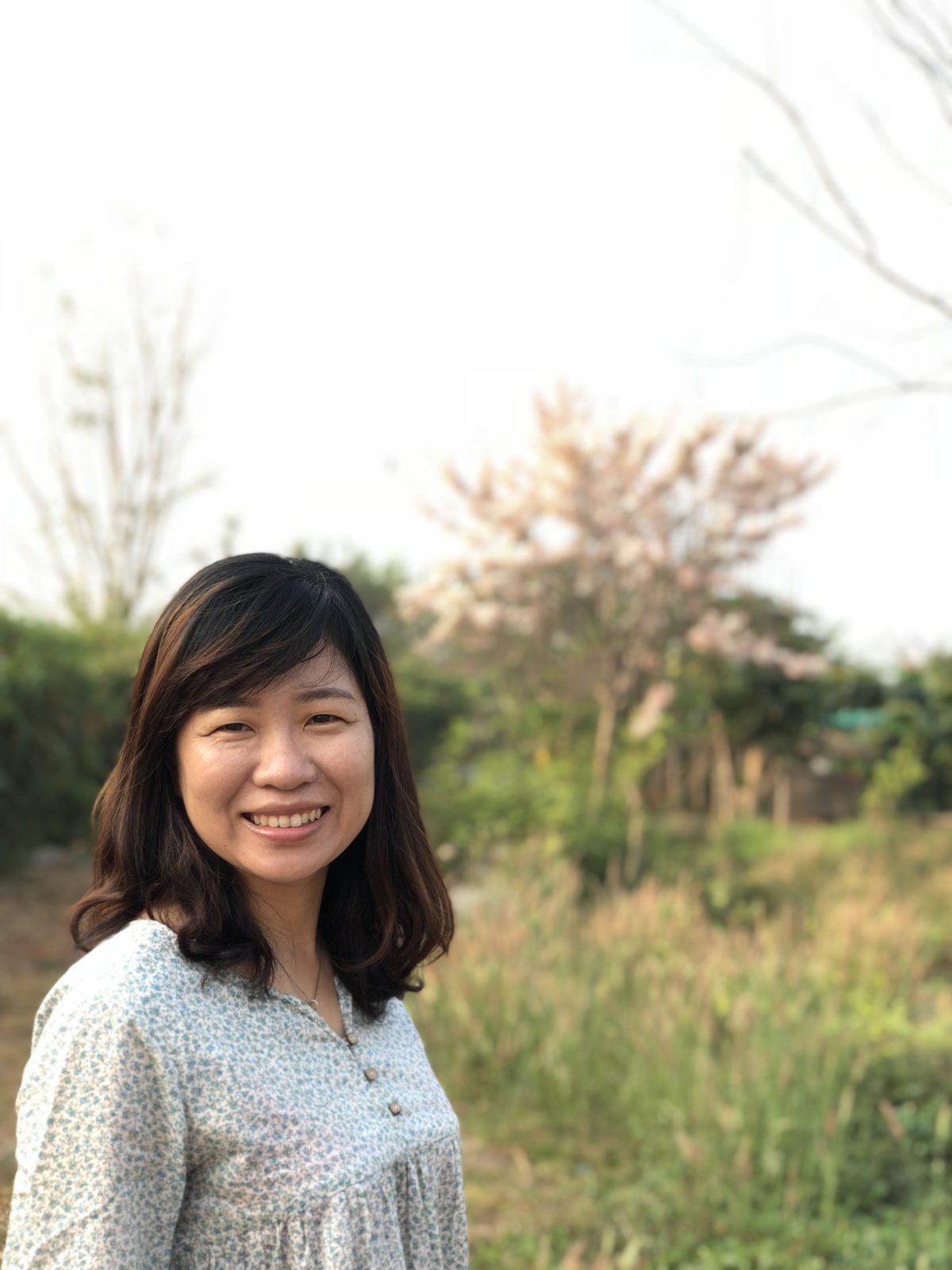
Ho Gia Anh Le, True Forest of Aspiration, is an educator who aspires to build happy schools communities in Singapore and Vietnam by integrating mindfulness in education.
Our true home dwelling within, wherever we may find ourselves. Buds of loving kindness blossom and fruit so beautifully in the company of others walking this path. Every moment spent in peace—a precious gift of the universe shared, Deep gratitude for dearest smiles— Love reflected in every direction.
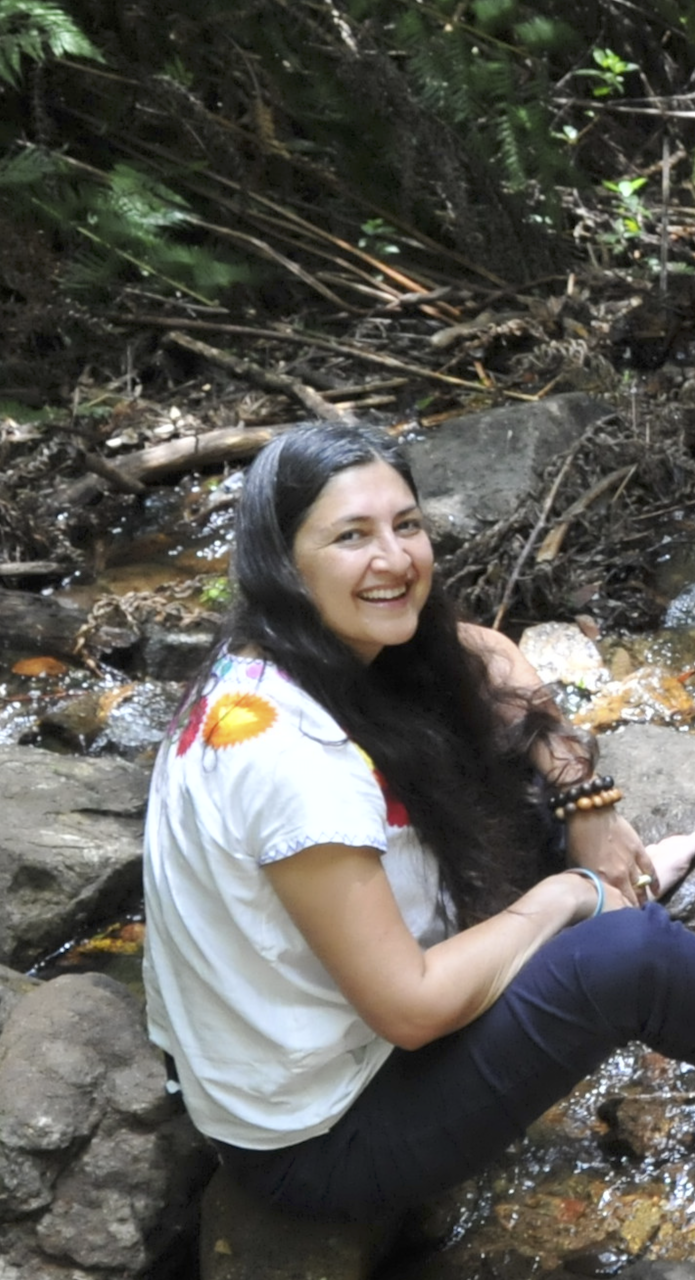
Charmaine Basel
Loving Action of the Heart

